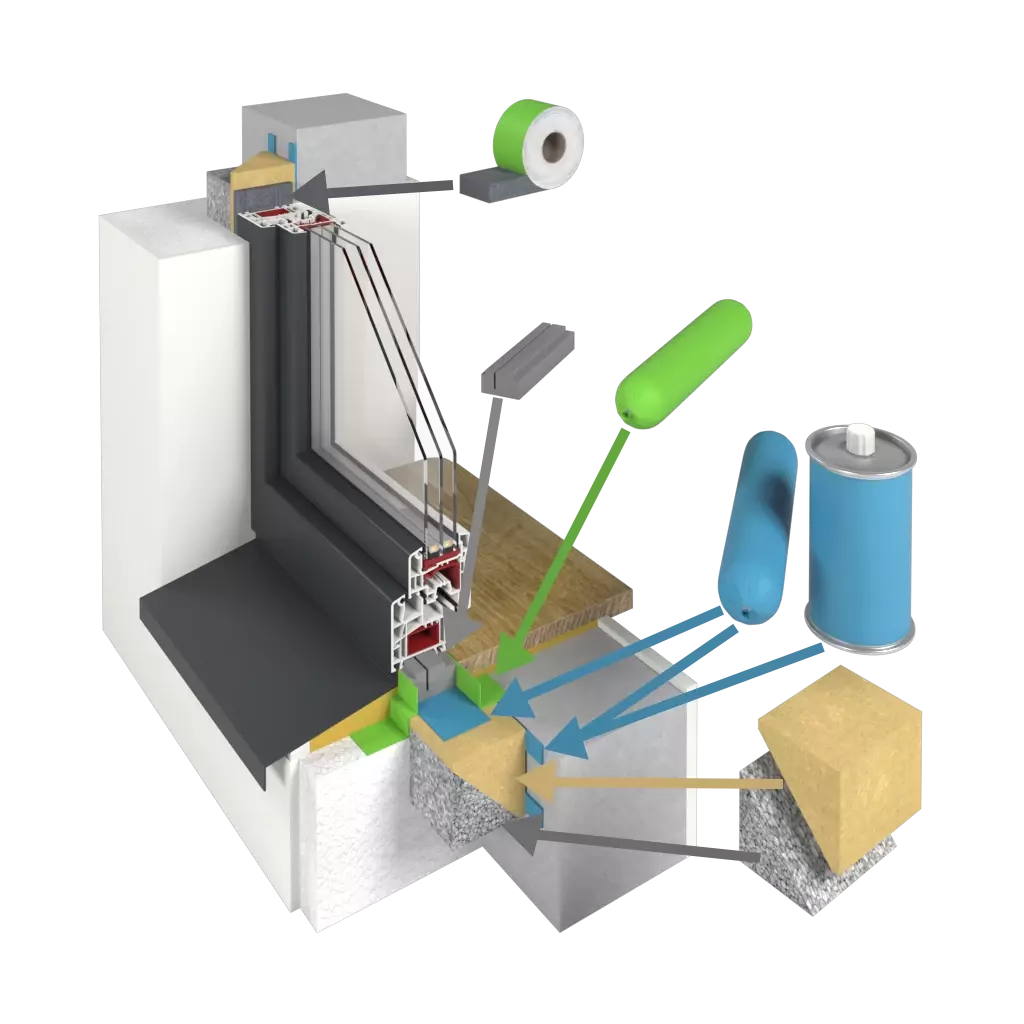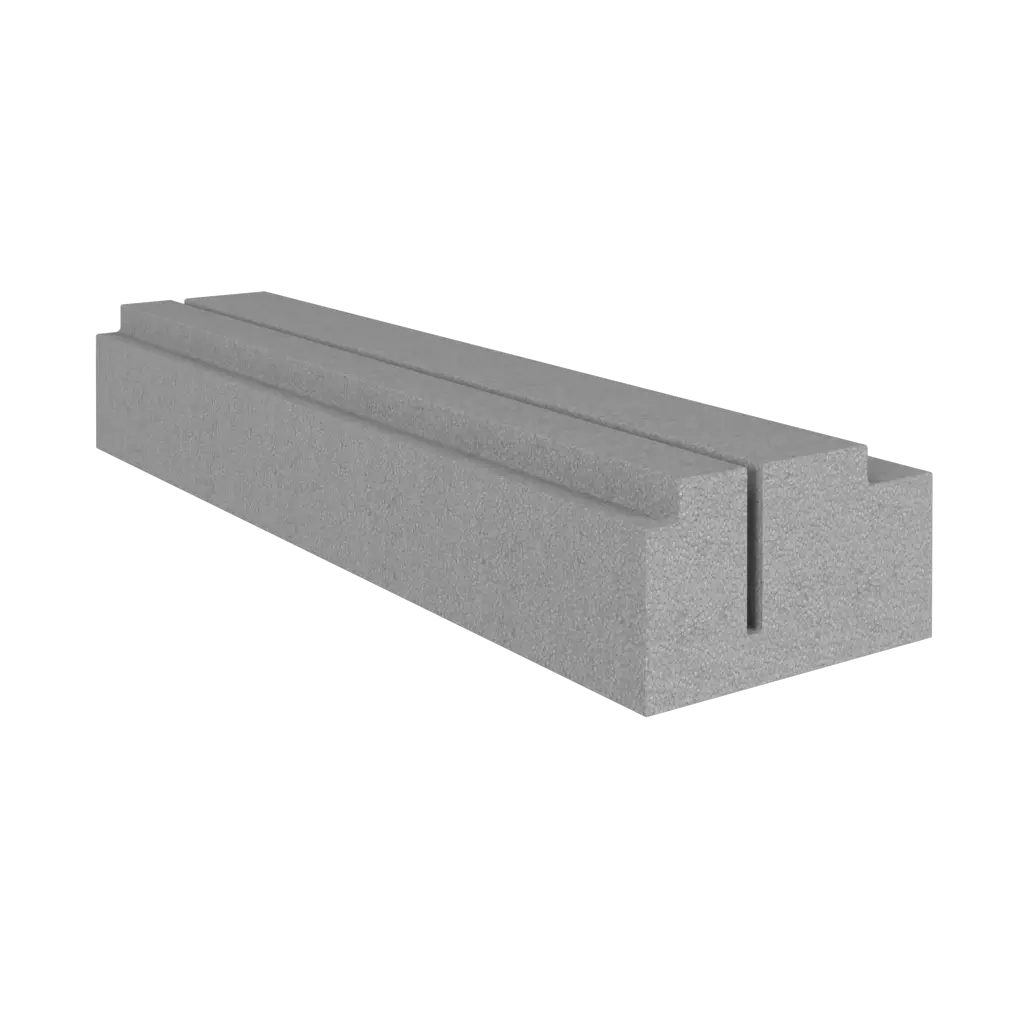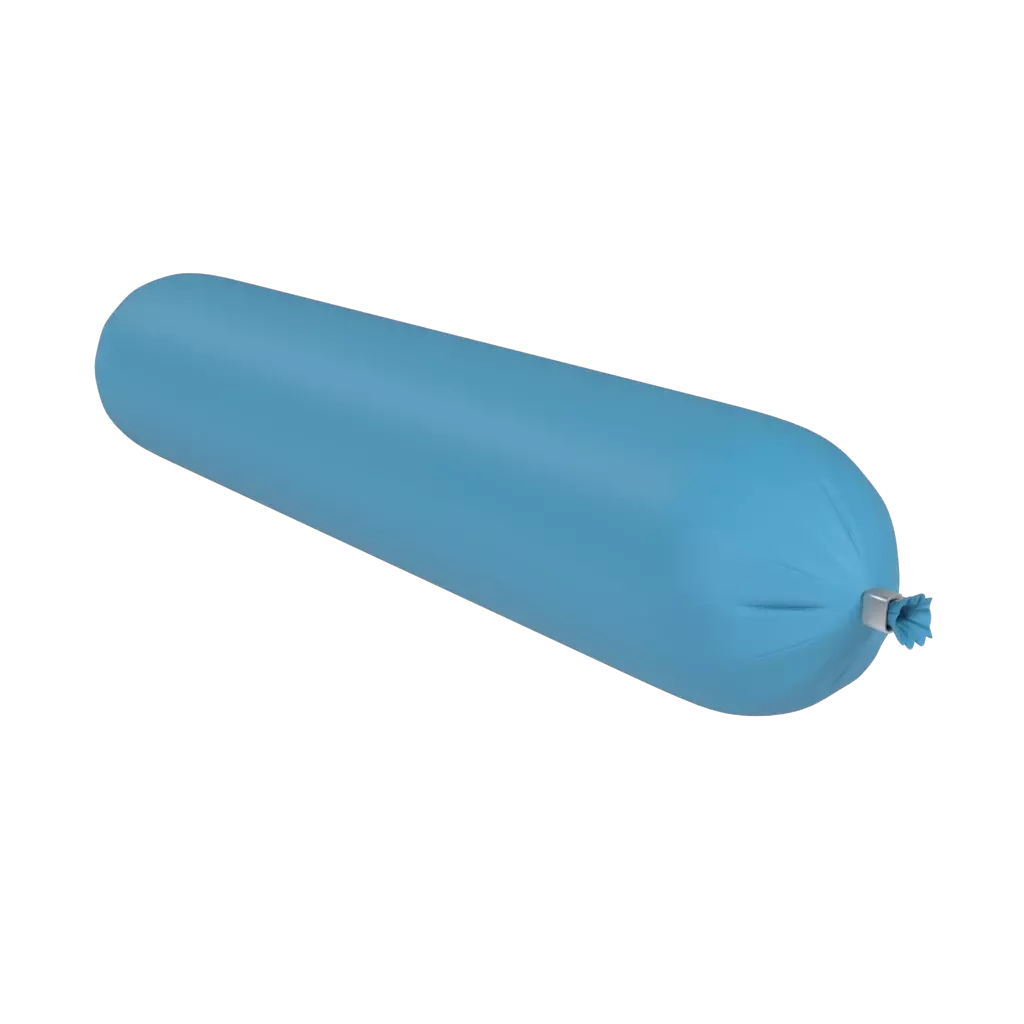Installation in the insulation layer

Installation in the insulation layer, also known as MOWO installation, is an innovative technique that is revolutionizing the window installation process. Instead of traditionally embedding windows deep in the masonry, this method allows windows to be installed on the outside of the building in a properly designed console. The main advantages of installation in the insulation layer include: maximum energy efficiency, ensuring long-term durability or saving on heating.
Installation in the insulation layer type I and type II
Installation in the type I insulation layer involves placing the window directly on the thermal insulation of the building wall. Once the wall is insulated, the window is installed outside the insulation layer. This method uses only an installation plate that allows the window to partially extend into the insulation layer of the building (up to 35mm beyond the outline of the wall). This method has the advantage of simplicity and speed of installation, which translates into lower implementation costs. However, installation in a Type I insulation layer requires careful control of the tightness of the connection between the window and the insulation to prevent air leakage and heat loss.
Installation in the type II insulation layer involves placing the window in front of the insulation layer, on a special console. This console is placed outside the thermal insulation layer, providing additional insulation around the window. Installation in the Type II insulation layer is more technologically advanced than Type I and allows for better control of thermal insulation and minimization of thermal bridges, thanks to the use of not only the insulation board, but an additional insulation wedge. It also makes it easy to fit the building's insulation panels.
Variants

Type I

Type II
Maximum energy efficiency
Ensuring long-term sustainability
Products used









- Expansion Tape: Expansion tape helps absorb structural movement, providing a permanent seal.
- Under-window profile: the under-window profile is an element that protects against moisture and seals the lower part of the window.
- Liquid window film: window film protects against the infiltration of rainwater and other weather conditions.
- Quick-setting adhesive: Quick-setting adhesive is used to permanently bond structural components.
- Priming agent: Priming agent can be used to protect the surface from corrosion.
- Installation plate: the installation plate can be used to evenly distribute loads and level the surface.
- Insulation wedge (type II): Insulation wedge (type II) is used for thermal insulation and protection against thermal bridges.
Saving on heating
Installation in the insulation layer contributes to heating savings through several key factors. First, it eliminates or minimizes thermal bridges, which prevents uncontrolled heat loss and energy loss. As a result, heat from inside the building is effectively retained inside, allowing the building to maintain a stable temperature without excessive use of heating systems.
Secondly, installation in the insulation layer allows the use of high-quality insulation materials that have excellent thermal insulation properties. These materials effectively reduce the flow of heat through a building's walls, resulting in less heat loss and lower heating bills.
In addition, installation in the insulation layer often goes hand in hand with the use of energy-efficient windows and doors, which also have a significant impact on reducing heat loss and energy consumption. They improve the insulating capacity of the building, preventing the cold from entering in the winter and the heat from entering in the summer.







